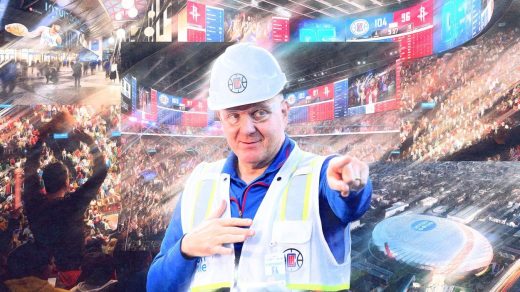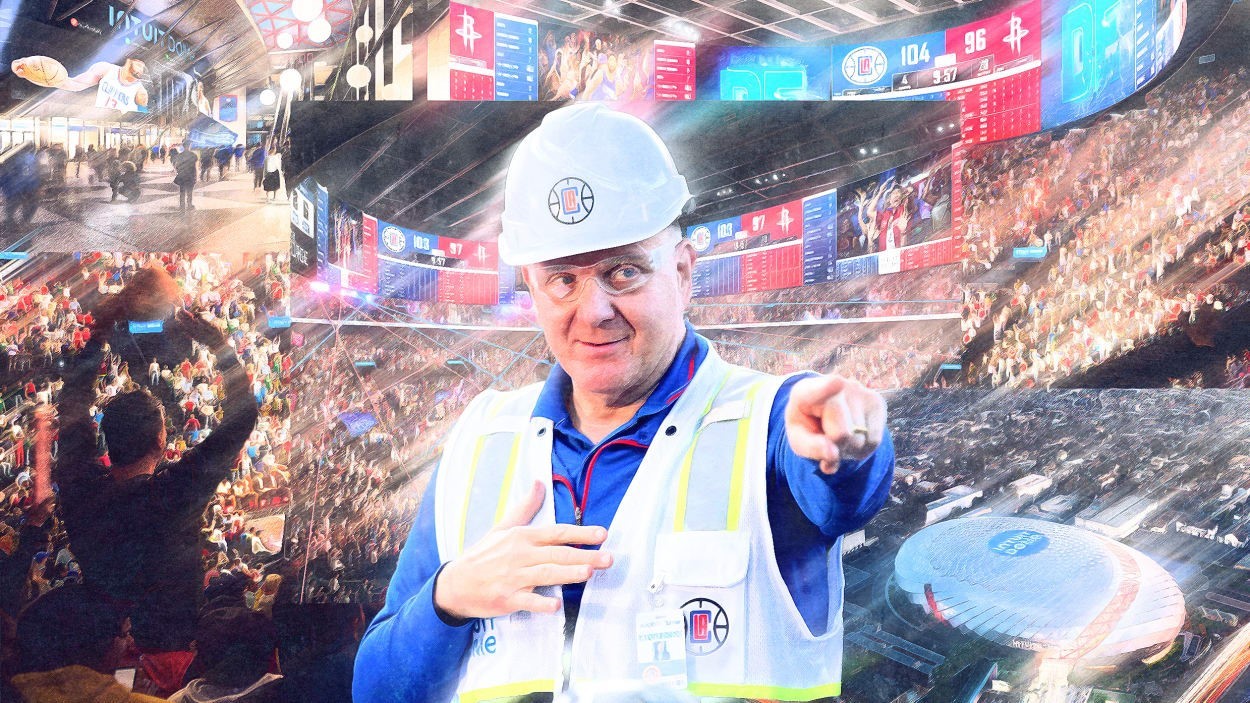Inside Steve Ballmer’s $2 billion playground for LA Clippers fans
In one of Steve Ballmer’s early meetings with the architects he hired to design the Intuit Dome, the Los Angeles Clippers’ new arena set to open this August, he issued an ultimatum. The fan experience—nay, the basketball experience—was paramount for Ballmer. The architecture firm asked, Do you want a tight, intimate, intense experience . . . or do you want comfort?
“Yes,” Ballmer said.
Ballmer, the ex-Microsoft CEO—and currently the world’s sixth-richest person at an estimated $138 billion—is a guy who usually gets what he wants. He purchased the Clippers in 2014 for $2 billion; at the time, the most-ever paid for an NBA franchise, dwarfing the $550 million paid for the Milwaukee Bucks earlier that year. Many believed he overpaid for the team (now worth an estimated $4.65 billion). But Ballmer, a passionate basketball fan, desperately wanted to own an NBA franchise. And he got one.
Nearly a decade later, Ballmer is matching the $2 billion he paid for the team with his investment in the Intuit Dome, a venue he says he wants to be a “basketball mecca.”
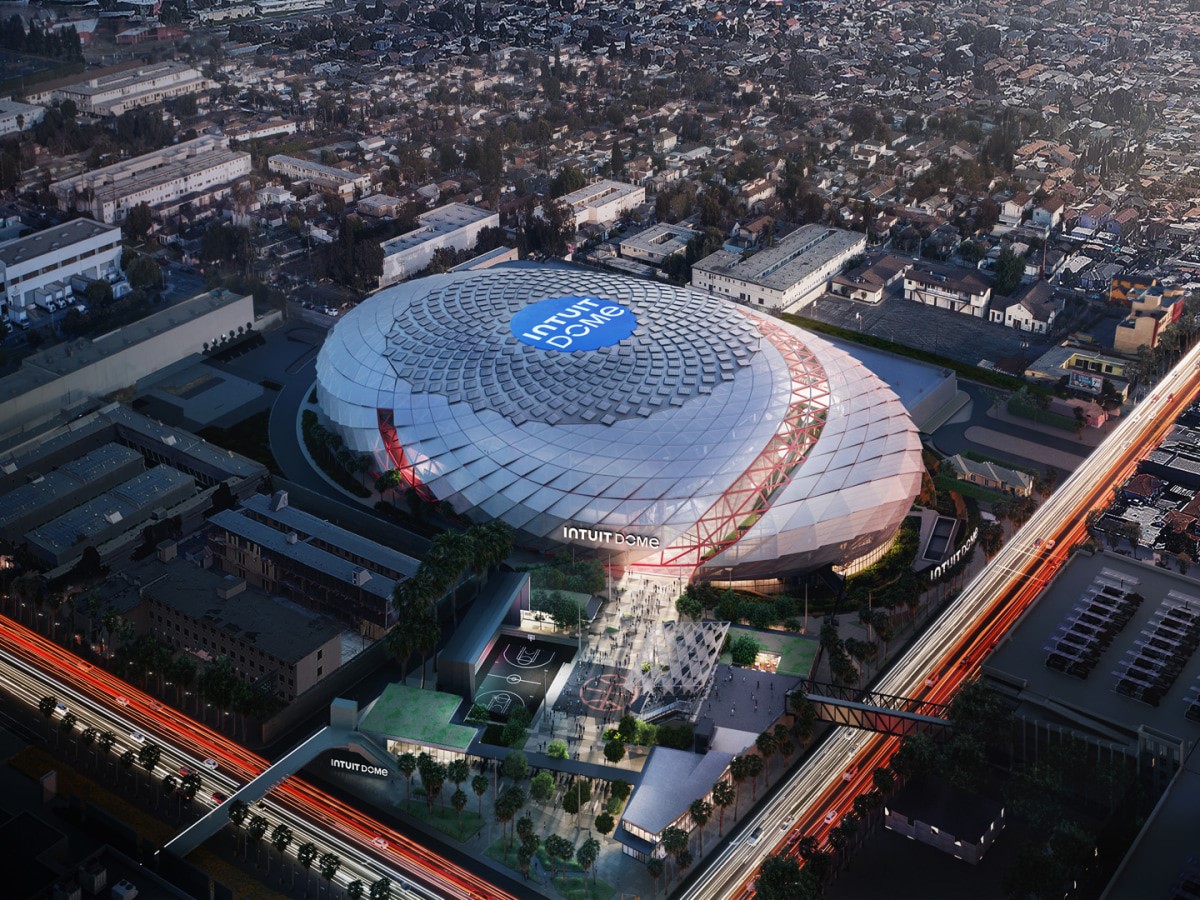
You have to choose, the architects told Ballmer. Gillian Zucker, president of business operations for the Clippers, and Ballmer’s first major hire after buying the team, recalled this exchange from under a hard hat and over the hums and beeps of construction equipment before a tour of the Intuit Dome site. Ballmer wanted tight, intimate, intense, and comfortable, and he had hired some of the best architects in the world from AECOM to make his vision a reality.
Figure it out, he told them.
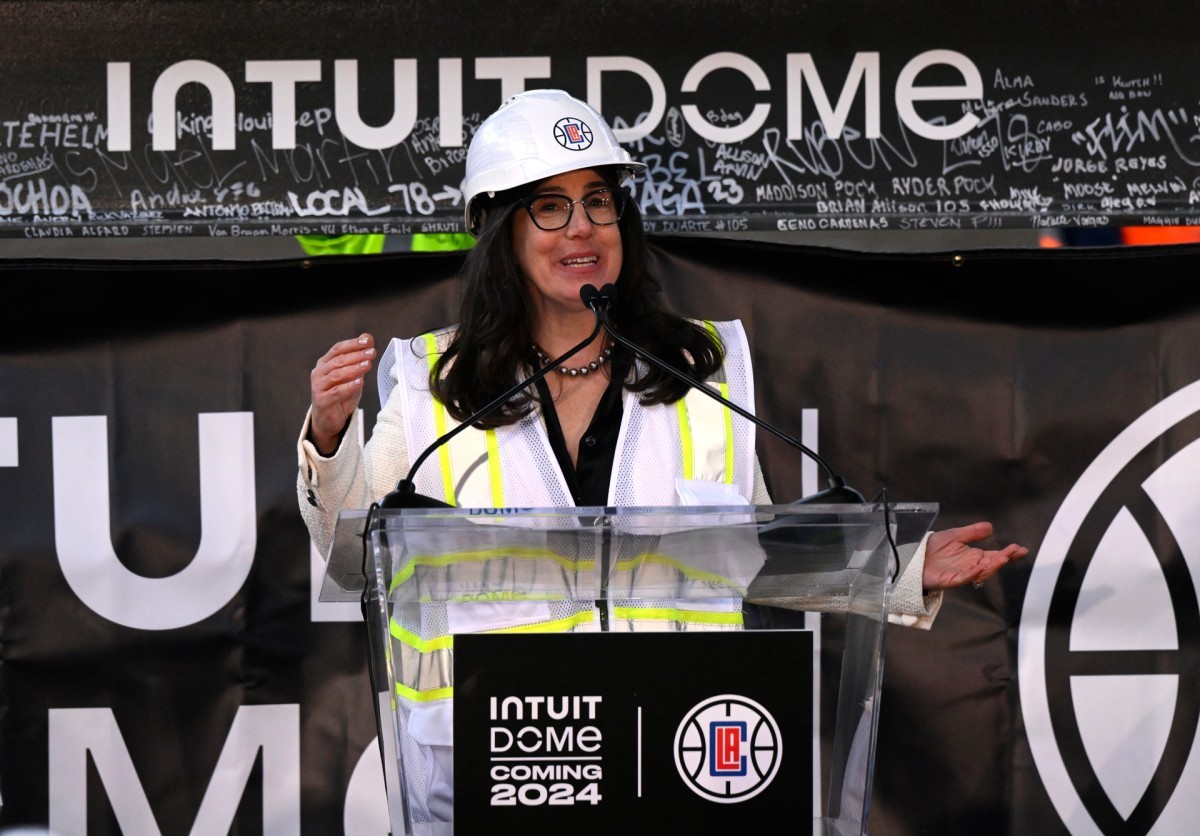
A Basketball Dream House
The Intuit Dome experience begins the moment you step off the West Century Boulevard sidewalk in Inglewood, roughly 10 miles southwest of the Crypto.com Arena, which the Clippers currently share with their in-city rival, the Los Angeles Lakers, as well as the NHL’s Kings and the WNBA’s Sparks.
When you step onto the Intuit campus, you enter an 80,000-square-foot outdoor plaza. To the left, there’s a regulation-size outdoor basketball court for pickup games with a 75-foot 4K video board as a backdrop. To the right, an amphitheater-style staircase-and-seating structure reminiscent of the bleachers-like red stairs in Times Square in New York. “It’s part of the vibe we’re really trying to create here—a park environment for the community where people can come, sit, and hang out,” Zucker says.
Rounding out the plaza is a bar and restaurant, a band shell to host concerts and other events, and a 5,000-square-foot retail space that will house the Clippers’ first-ever flagship team store.
From the plaza, fans with lower-bowl tickets will enter the arena at ground level, while those with terrace-level tickets will take an escalator up to a separate entrance.
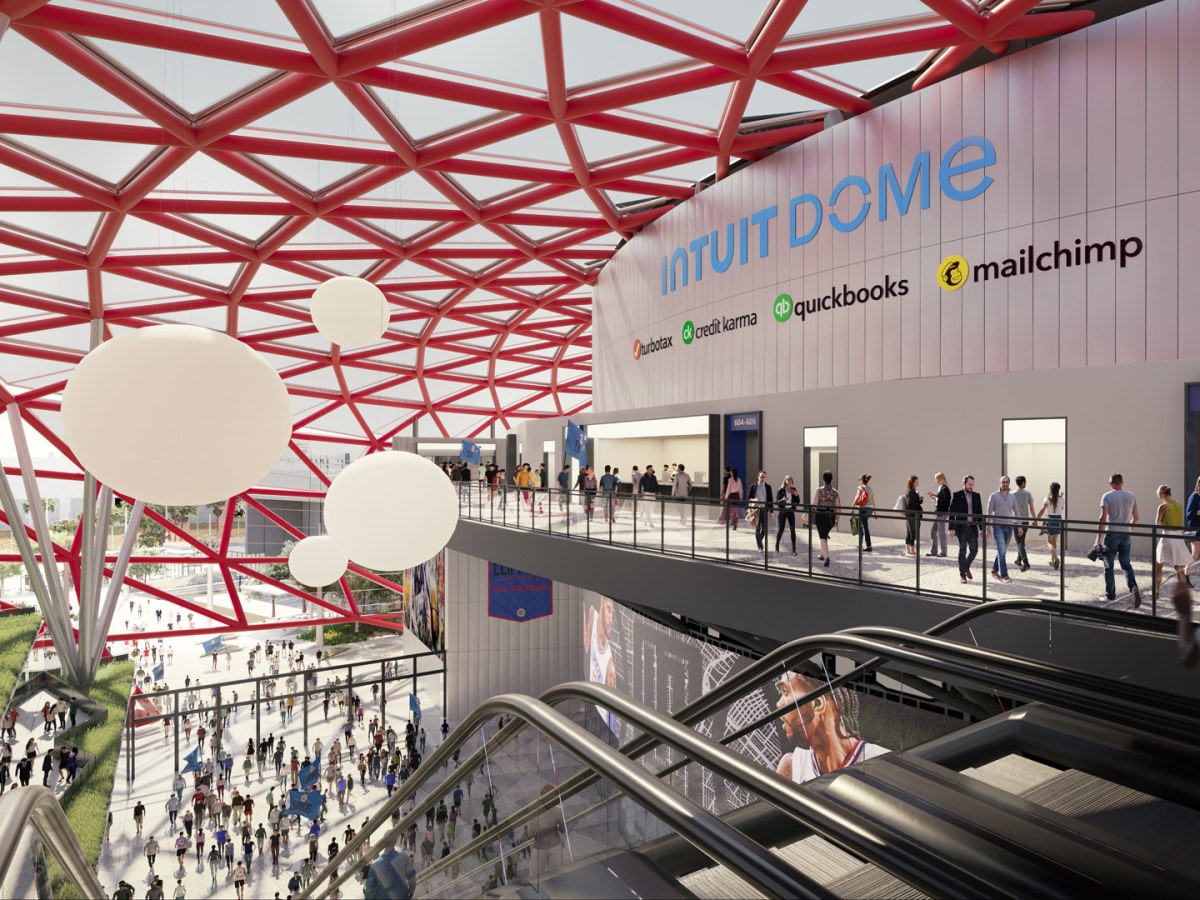
The Best Seats in the House
Ballmer doesn’t like suites. He wants fans out in their seats, enjoying the action and contributing to the atmosphere. “I want it to be about the basketball,” he told Fast Company in mid-January. “I want it to be pump and stomp and have the fans engaged and bringing the energy during the games. I feed off that.”
But when asked about the biggest lesson he’s learned about innovation, Ballmer said, “It’s important not to just design for yourself.” He recalled how Bill Gates was a programmer, and he and Paul Allen started Microsoft by developing tools for programmers. Mark Zuckerberg had a particular application in mind when he was in college, and he built a product for himself. “So, in a sense,” Ballmer added, “[designing for yourself] is a good thing to do. And yet, you don’t want to make it exclusive.”
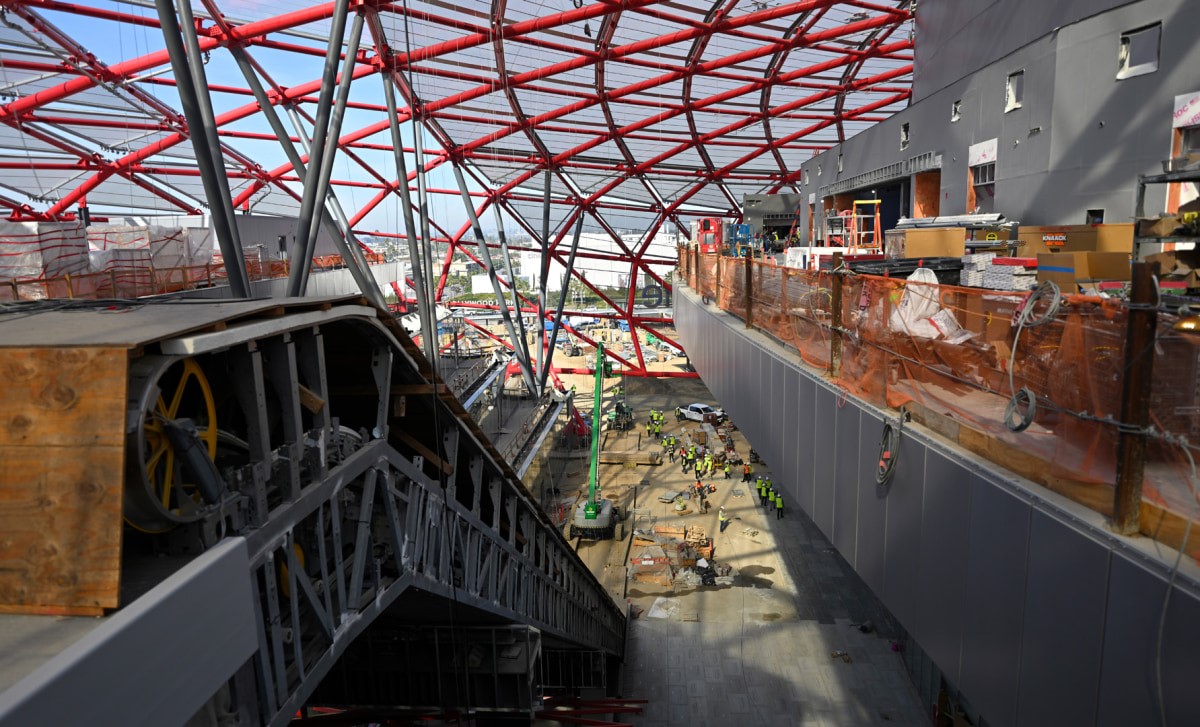
This ethos anchored the design philosophy behind the dome. While the venue very much reflects Ballmer’s vision, the design and logistical details were refined not by catering exclusively to Ballmer, but by strategically collecting intel, sometimes from unlikely sources.
“When we were designing the building, we talked to everybody who would be using it—literally everyone,” Zucker says.
When designing the locker rooms, they talked to equipment managers from around the league to get a sense of how they use the space and what the players like. They talked to the riggers who set up for concerts and live events. The sound engineers. The stagehands who load and unload trucks. The vendors. They even talked to the media and referees about how they access and use their respective spaces.
“That’s the entire concept around the building,” Zucker says. “Whether you’re here to watch a game, watch a concert, cover an event, whatever—we ask, How do we make that experience better?”
When they talked to fans about suites, they found that those who don’t like suites generally have two reasons. The first is that their company doesn’t have enough people to fill a suite. The second is that—at those prices—they want the best seats in the house.
In basketball, that’s courtside.
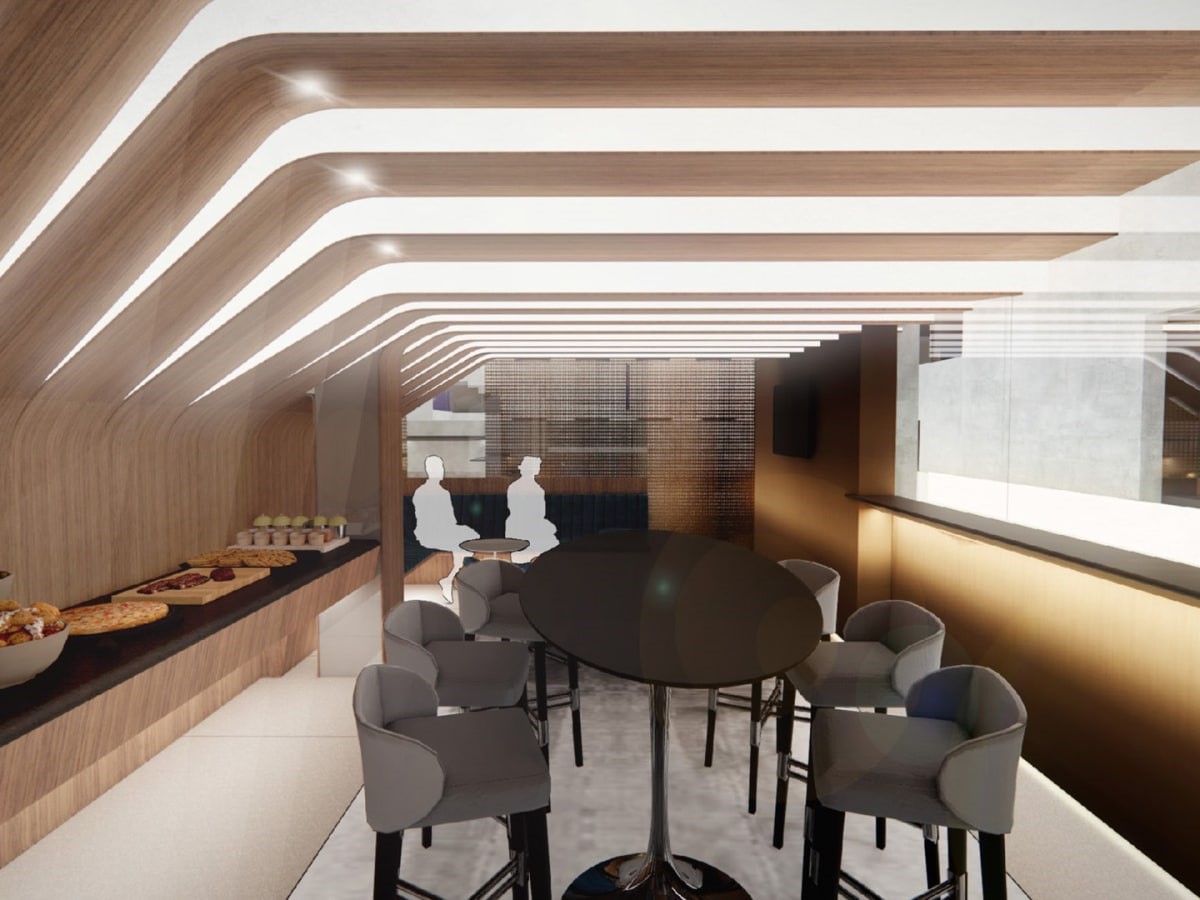
The architects’ solution? Subterranean luxury boxes, called cabanas—a row of four small, exclusive suites underneath the stands, along the home-side baseline, from which fans can walk up to watch the game from their courtside seats. “There’s no courtside suite [like it] anywhere on the planet,” Zucker says. “So it’s pretty special.”
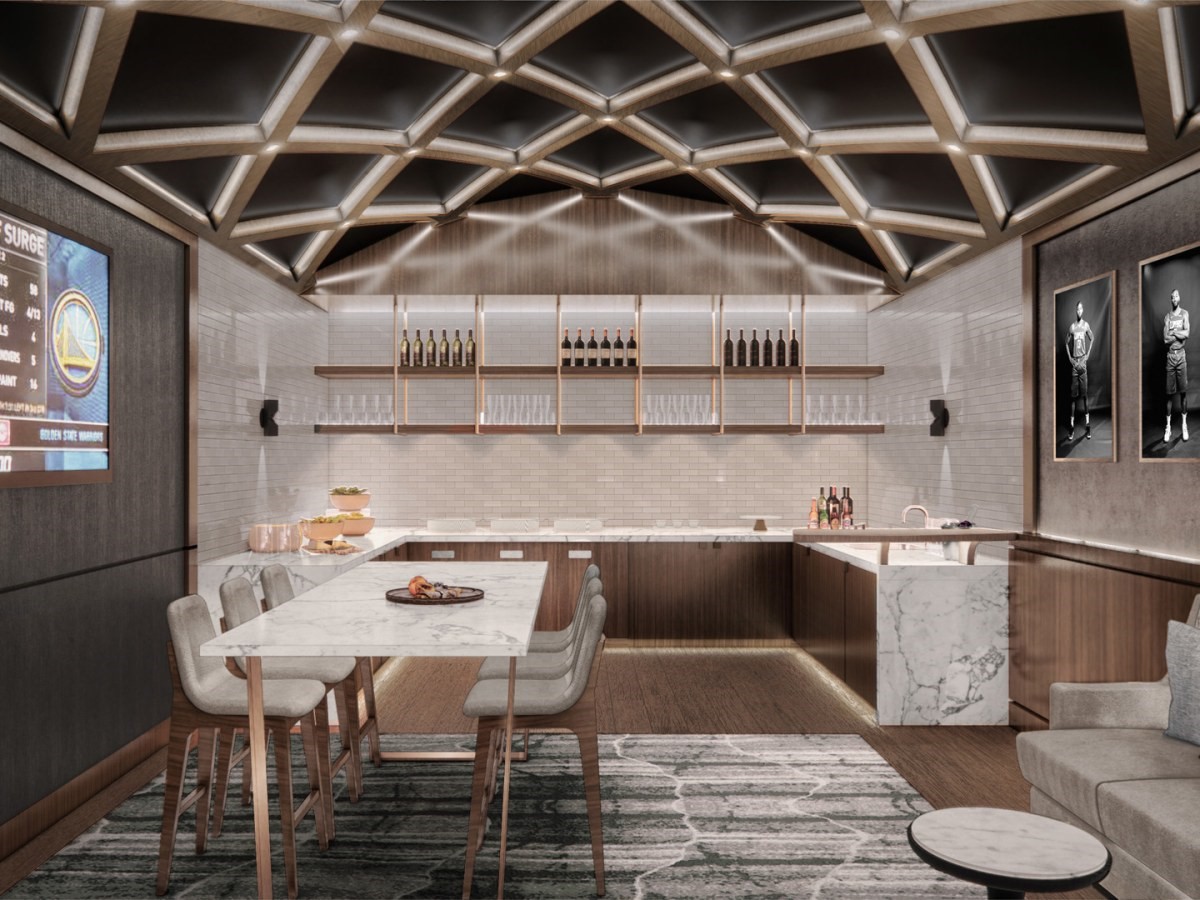
In addition to the four cabanas, the dome has 20 bungalow suites that offer private “bunker suite” experiences, while its 84 loft suites feature smaller, theater-style seating with four-person boxes and a pregame dining area and concierge service. An additional 42 halo suites atop the lower bowl are designed to limit the gap between the lower and upper bowls for improved acoustics and to get upper-bowl fans closer to the on-court action.
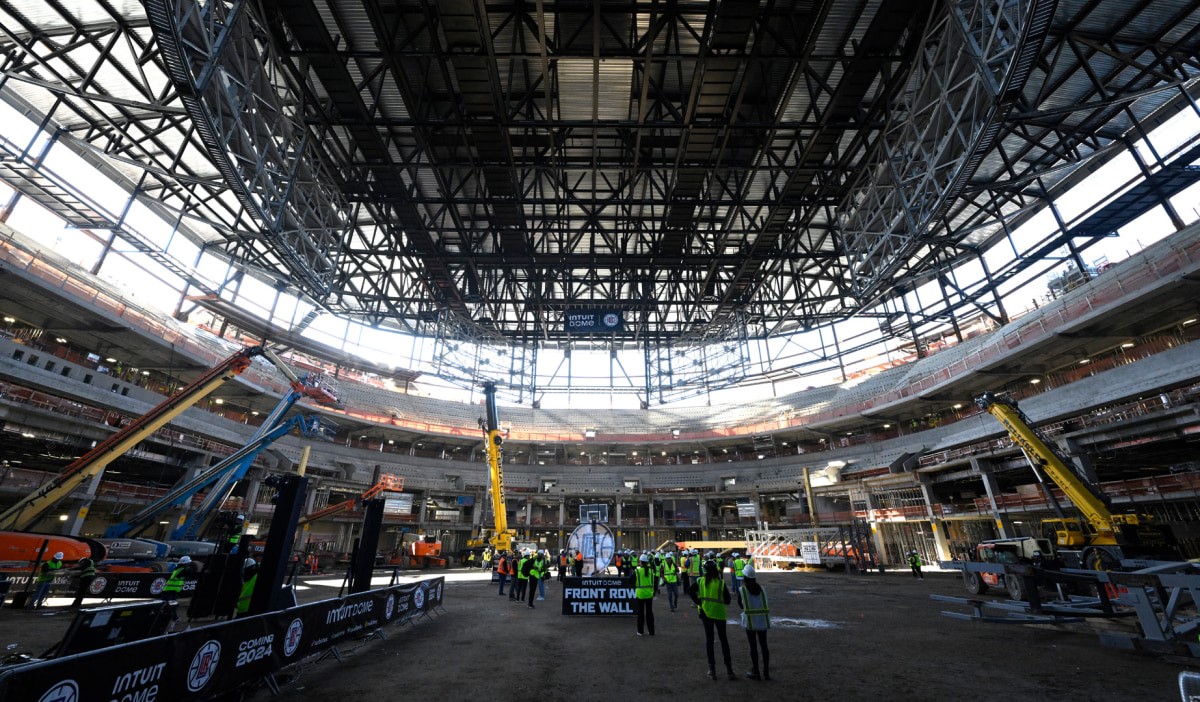
The Ultimate Home-Court Advantage
Across the venue on the opposite baseline—the “enemy” side of the dome—is a section called “the Wall.”
In 2020, Clippers forward Kawhi Leonard had his jersey retired at his alma mater, San Diego State University. Ballmer attended the ceremony. Impressed by the construction and cascading stands of Viejas Arena, home to San Diego State’s men’s and women’s basketball teams, Ballmer wanted to bring that design and college atmosphere to the Intuit Dome. The result is the Wall, a continuous grandstand of 51 uninterrupted rows, seating 4,500 fans, conveniently adjacent to the opposing bench.
Nearly 6,000 miles away in Dortmund, Germany, the stadium for the Borussia Dortmund football club, one of the winningest in the country’s history, features what’s called the “Yellow Wall.” At more than 300 feet wide and 131 feet high, it’s the largest terrace of any European stadium, holding nearly 25,000 fans (the stadium holds more than 81,000). That’s considerably more than Intuit’s 18,000 capacity. When designing their own wall, Zucker and her team talked to the Dortmund brass.
The Yellow Wall isn’t just a regular ticket. It requires membership to one of Borussia Dortmund’s official fan clubs, and in most cases, season tickets, which are notoriously difficult to come by. A select number of individual game tickets are available for “wall seating,” but available game tickets are a rarity—Yellow Wall seats, unicorns.
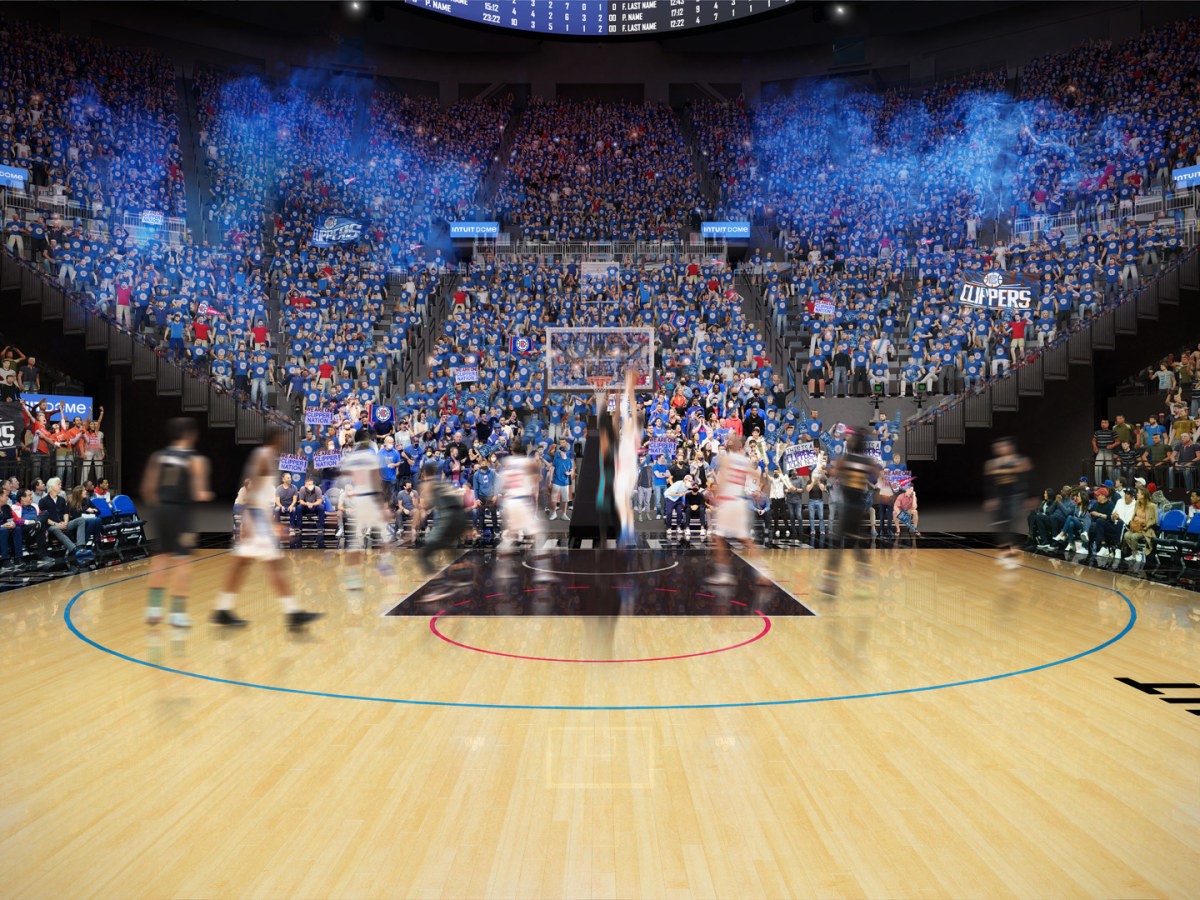
The rules for the Clippers Wall are similar and simple: Only fans who have earned Chuckmarks (named after the team’s mascot, Chuck the Condor) can purchase tickets to sit in this section, and Chuckmarks are available only through a specially designed loyalty program. Their Wall will not only give the Clippers what Ballmer hopes is the greatest home-court advantage on the planet, but the grandstand is also designed to be retractable, streamlining the process of transitioning the arena from basketball- to concert-ready.
“Again, it’s about making people’s jobs easier,” Zucker says. “At the Kia Forum, we have to actually break down the whole grandstand and move it off in parts. It’s a very extensive, very expensive operational issue. And I think a lot of facilities have that. But these retractables that store in place—they’re pretty impressive.”
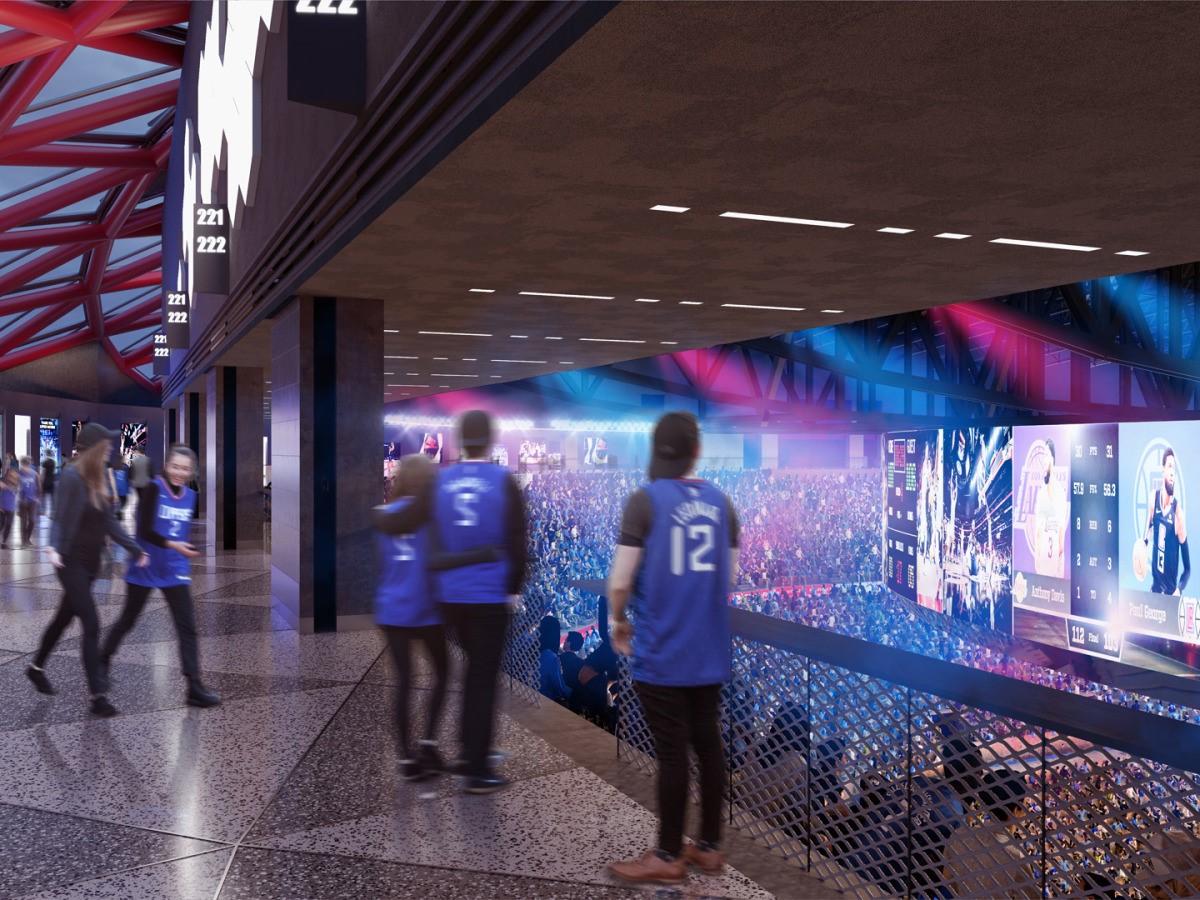
The Worst Seats in the House
As part of her 100-plus stadium tour while contemplating the dome’s design, Zucker took Ballmer to Atlanta to tour Mercedes-Benz Stadium, built in 2017 for the NFL’s Falcons. The venues are vastly different, and at first Ballmer didn’t understand the correlation between this stadium and the Intuit Dome.
“I just want to take you up to this top level,” Zucker told Ballmer.
Falcons owner and fellow billionaire Arthur Blank, who cofounded Home Depot, helped form the vision for the stadium. “And one of the genius things he did,” Zucker says, “was create a concourse level so that even if you were sitting in the last row, when you’re walking to your seat, you’re walking down. You’re walking toward what you want to be watching—what you paid to experience.”
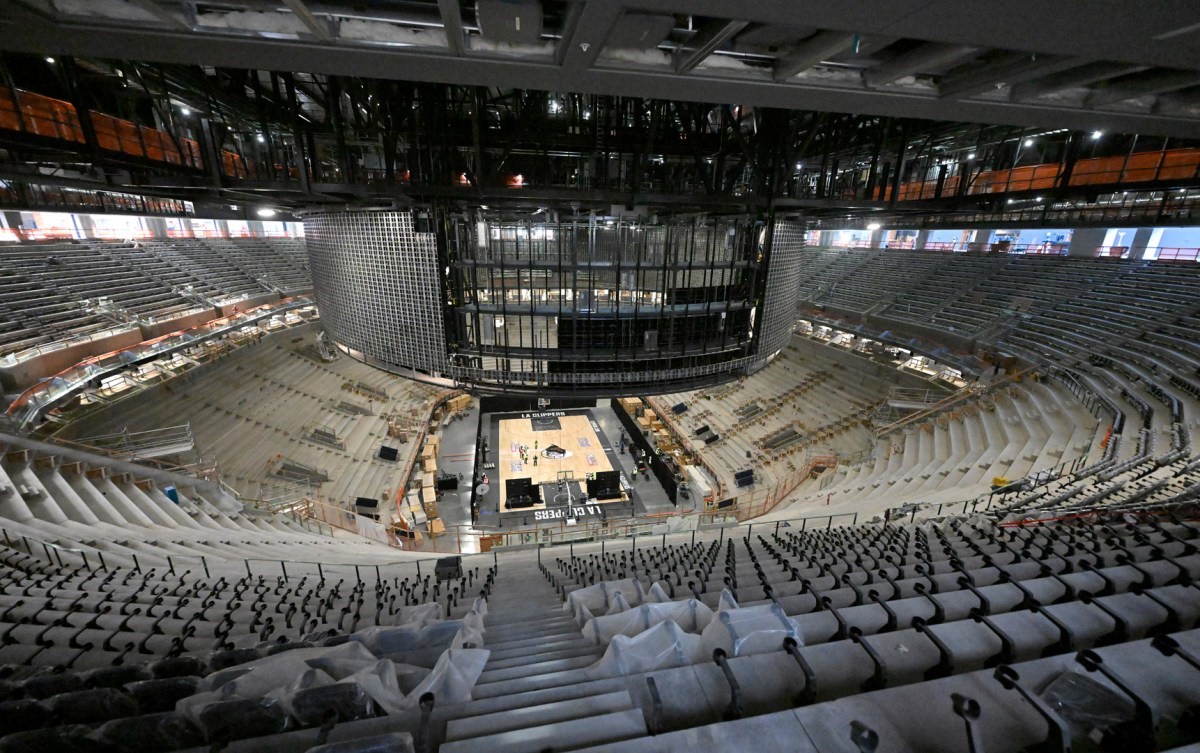
“And so that’s exactly what we did [at Intuit],” she says. “It’s a top-loading facility that provides that experience for everyone.”
So even if you’re sitting in the top row at the dome (the “worst” seats in the house), not only are you just steps away from bathrooms and concessions but you’re also not cramped against the arena’s ceiling—or cramped at all, Zucker says.
“This building has more legroom than any other arena in the country,” she says. “And it has these sight lines that put you right on top of the action. So if you sit in Row 20 [at the Crypto.com Arena], and you’re sitting in Row 20 here, you’re a full 45 feet closer to the court.”
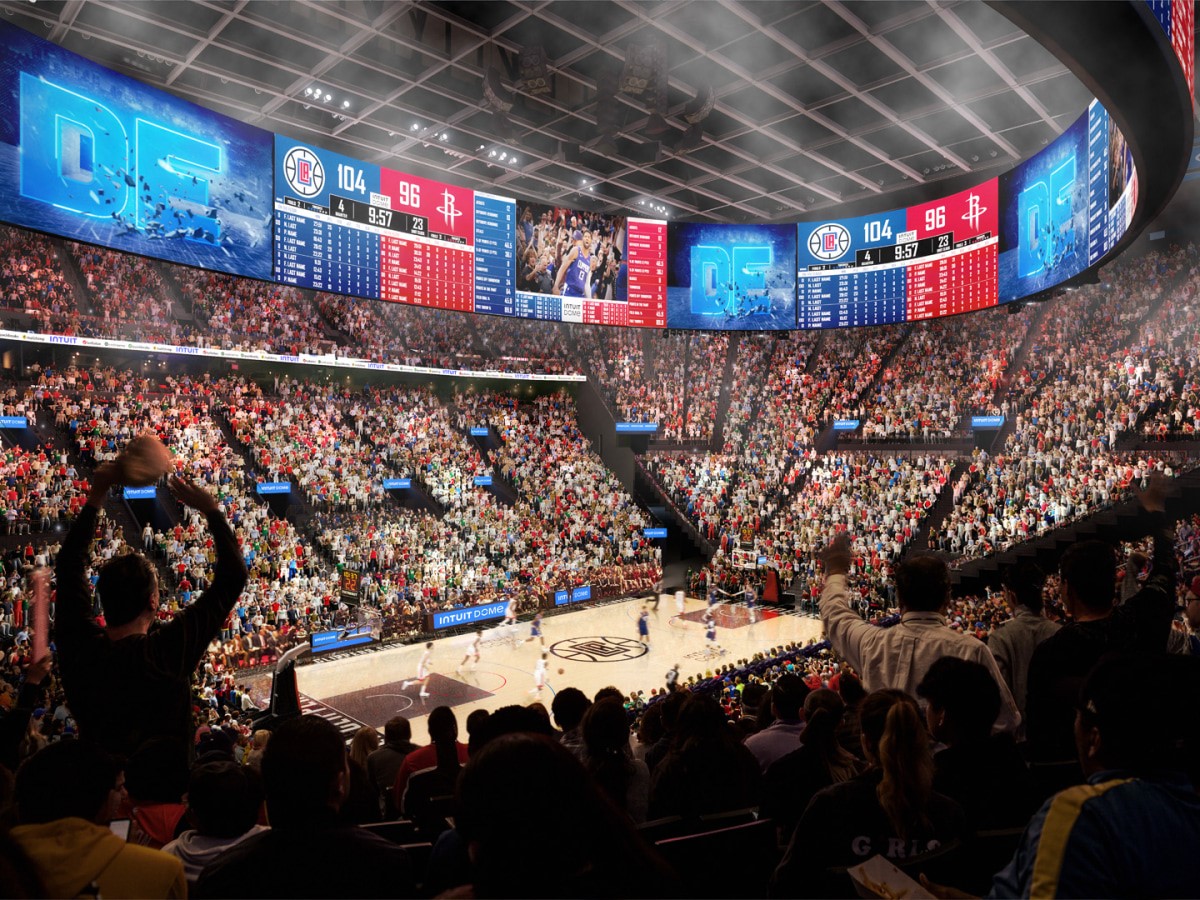
Power to the People (in Their Seats)
Early in the construction process, the architects approached the Clippers brass, asking if they wanted to run power to the suite seats. These are busy professionals, they said, who have been working all day. Their phones might be low on juice.
Zucker and her team thought, Well, what about the other busy people who aren’t in suites, who need their phones to check on the babysitter or Uber home? How will they charge their phones? “So we asked, What would happen if we ran power to every seat in the building?” she says. “And they said, ‘Nobody would ever do that.’”
They brought the idea to Ballmer, who greenlit phone-charging in every seat. Then he gave Zucker and her team some homework. If they have power in every seat to charge phones, Ballmer asked, “What else would you do with it?”
Most of the ideas included strategies to keep fans in their seats, a strict Ballmer maxim—ideas like adding four-button controllers in each seat that can be customized for different games and interactive events; and LED laser pointers so fans can participate in games on the dome’s halo board (a 44,000-square-foot, double-sided, continuous wraparound 4K LED screen that’s not only a scoreboard but also an interactive element to inform and engage fans). Other ideas, which are still in development, include crowd-intelligence mechanisms that can measure audio levels in each section so that the loudest, craziest, most-engaged fans can earn rewards for their atmospheric contributions.
“We have some incredible technology that I think is going to amaze a lot of people,” Zucker says. “But it’s not a bells-and-whistles technology. That authentic piece of it is super important to the philosophy of the building, which is no tech for tech’s sake. It’s got to be tech that actually makes the experience better.”
“I bring that sort of ethos, if you will, to the building,” Ballmer said. “Not a technology ethos, but an innovation ethos where presumably we say, ‘Let’s build the greatest fan experience in the world’—and, yeah, tech really can help a bunch.”
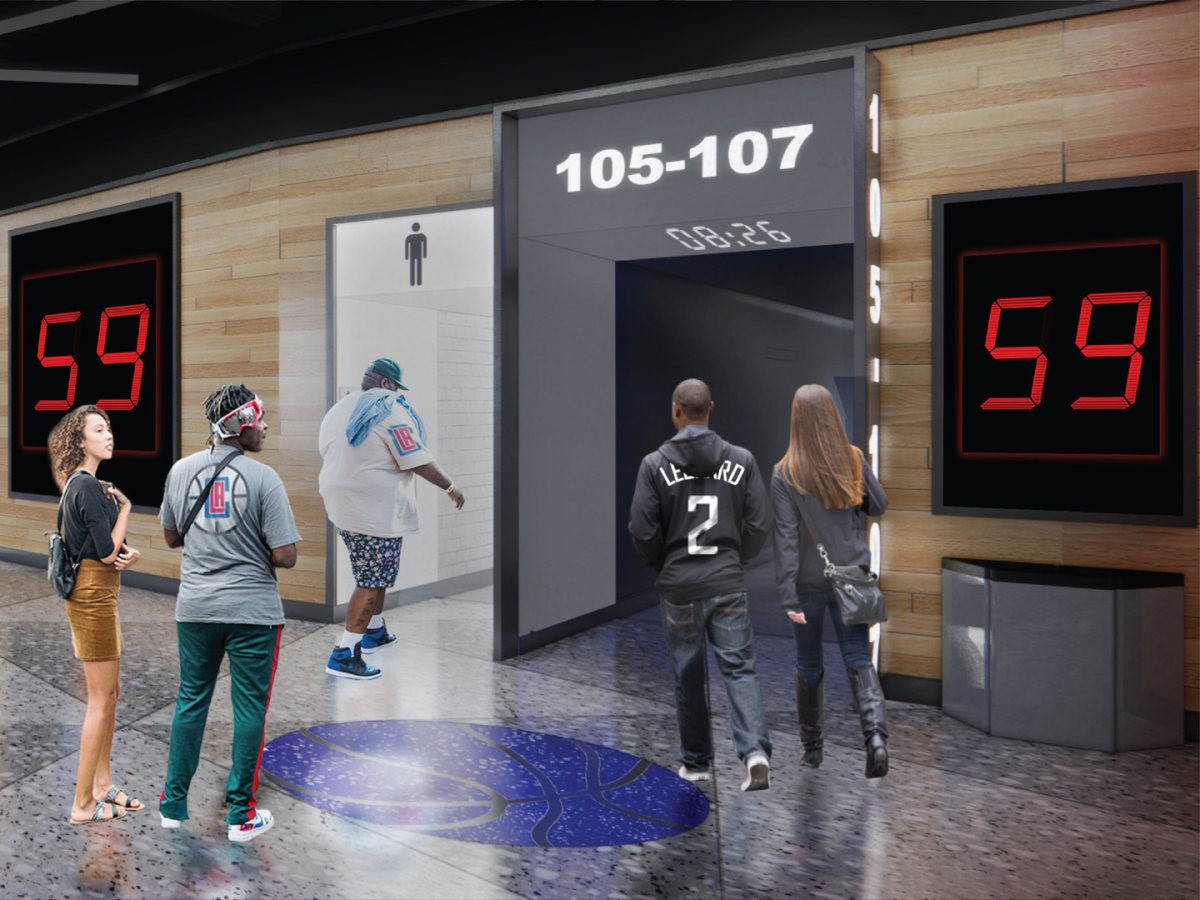
Getting Butts Back In Seats
We need to talk about toilets.
As details about the Intuit Dome’s design have trickled out, people, including Ballmer, have been obsessing about the toilets.
“The thing I hate most in life is arenas where you have to wait in line for the bathroom,” Ballmer said in 2021. “I’ve become a real obsessive about toilets. Toilets, toilets, toilets.” And it’s easy to see why. In fact, he has 1,160 reasons to obsess—that’s the number of toilets at Intuit, a ratio of roughly one toilet for every 15 seats, more than double that of traditional NBA arenas.
You can unofficially credit George Hanna, the Clippers’ chief technology and digital officer, for Ballmer’s honeypot obsession.
In their first-ever conversation, Ballmer asked Hanna for an example in which he’d use tech to help solve a problem relating to the fan experience. “Easy,” Hanna recalled saying, as he stood in one of the dome’s expansive yet unfinished terrace bathrooms. He went on to describe a familiar challenge to anyone who’s ever attended a sporting event.
Halftime. You get out of your seat and pour out onto the concourse alongside thousands of other people. You want to go to the bathroom, grab some food, and get back to your seat before the second half starts. “So it’d be cool,” he remembers saying, “if you knew where the nearest bathroom was, and where the shortest lines were. Think Waze meets computer vision. Just give me an arrow—turn right, you’ll get to your seat faster than if you turn left.”
He remembers Ballmer’s deadpan response, verbatim. “I reject the premise of that idea.”
But Hanna, an IT executive who worked at IBM, Toyota, and the Walt Disney Company before joining the Clippers, didn’t tuck tail. And Ballmer didn’t stop there either.
Ballmer asked, “Why is that a problem?”
“Because everybody wants to find the shortest bathroom line,” Hanna said.
“Yes,” Ballmer quipped, “but why is that a problem?”
“Because one line is probably longer than another, and I just don’t know which,” Hanna said.
“But that’s not the problem,” Ballmer said. “The problem is that there’s a line at all.”
This one exchange significantly altered the dome’s design. Ballmer and his design team agreed that the venue would not only have bathrooms proportionally located throughout but also that they’d have four times the number needed. So while tech solutions were available, the more practical solution of overdoing it in providing a basic fan need won out.
But Ballmer’s obsession isn’t really about toilets, is it. It’s with keeping fans’ butts in their seats.
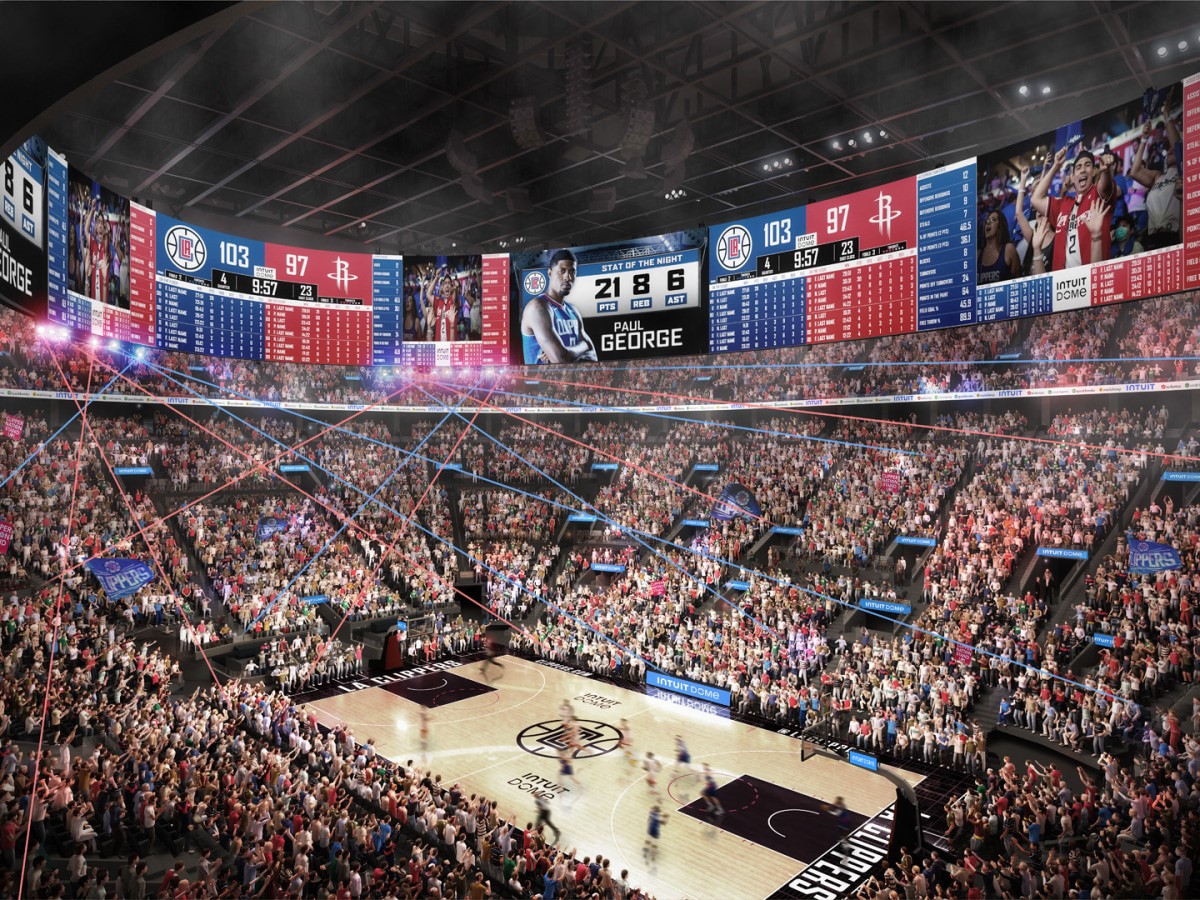
“Fan energy, fan involvement, seriousness of purpose,” Ballmer said. “I don’t mean don’t have fun, but we’re here to watch basketball. We’re not here to sit in a bar and occasionally look out at a live game or look at a screen. So we’re trying to focus in on getting people in their seats, making it easy for them to just be comfortable. It’s all about being in the seat, making noise. I know our players feed off that.”
According to Zucker, Ballmer wanted every seat to have the same conveniences of the at-home viewing experience: great view of the game, plenty of legroom, comfortable seat, and, if you’re hungry, you can get up, grab what you want from the refrigerator or pantry, and get back to your seat without missing any of the action.
Zucker’s talk-to-literally-everybody strategy included food-and-beverage-service partners. What she learned is that at many arenas, food is prepared in one centralized place and transported to each stand before the event. So food could be in holding for hours. When Zucker asked food-and-beverage partners how they’d fix that, she was told the only way is to put a kitchen in every single stand, and “no one would ever do that.”
So they did.
Intuit will have 31 kitchens in concessions throughout the building. Each stand features frictionless checkouts, as concessions have been designed as open markets that allow customers to freely take what they want. There’s no cashier, and fans are charged automatically on their way out so they can get back to their seat without having to wait in line or even swipe a credit card. Each stand’s menu will be identical, so fans don’t waste time wandering the concourse looking for the best option.
And if they do find themselves wandering the concourse, they likely won’t be far from one of the 199 countdown clocks that let them know when the game is going to start (or restart).
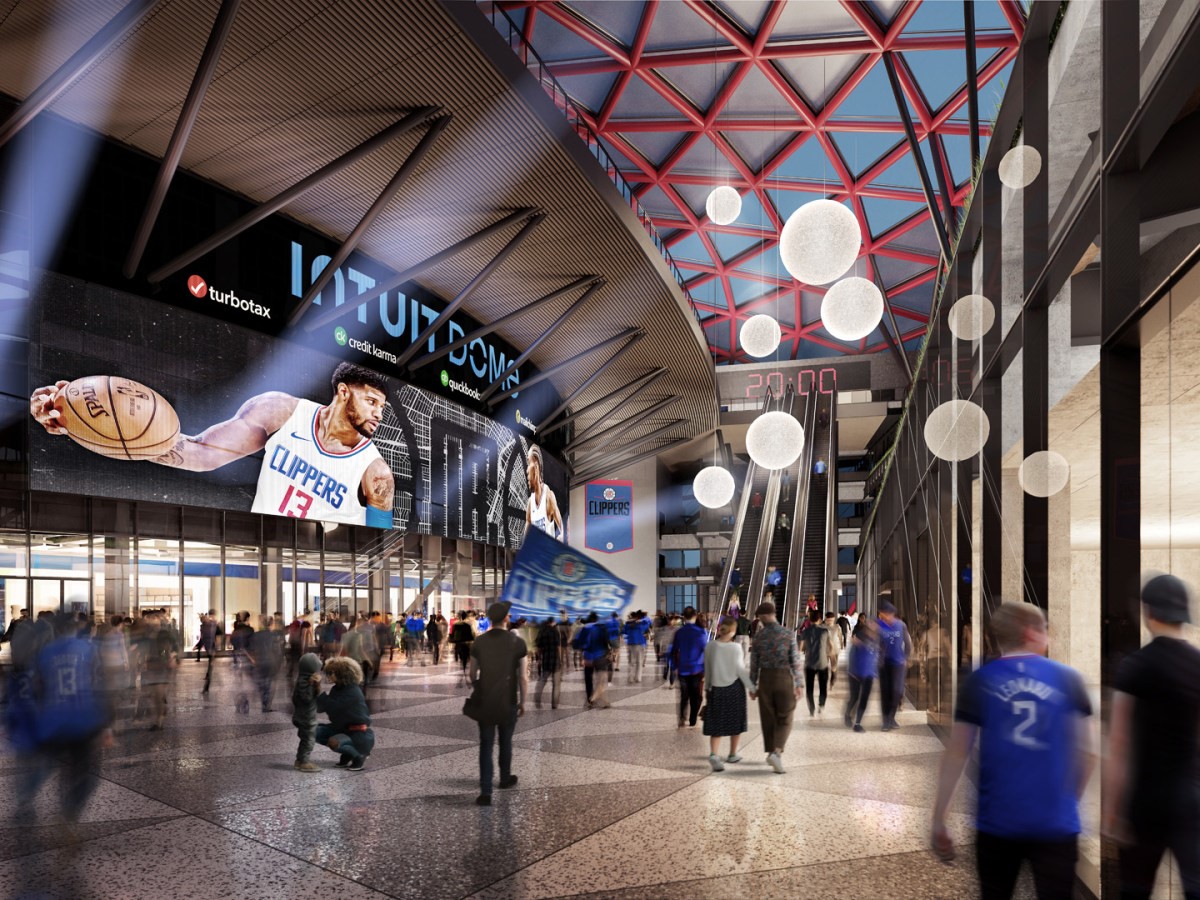
Bigger Than Basketball
Ballmer may be building his “basketball mecca,” and even though the dome’s exterior shell is designed to resemble a basketball net as a ball swishes through it, the Intuit Dome is about more than just hoop.
Intuit will operate 100% carbon-free from day one. It will be naturally ventilated and fully electric with 260 solar panels that will provide enough battery energy to power a basketball game or concert and sustain the building for seven hours completely off-grid.
The outdoor plaza was designed with the Inglewood community in mind. It will be open for everyday use even when there’s no event at the arena, with concerts and events held in the plaza, as they would be in a city park. The outdoor basketball court will be used to host pickup games. A second court for fans can be found indoors, a private venue with its own entrance, complete with bleachers and 4K video boards, designed to host corporate events, pickup games, and community events.
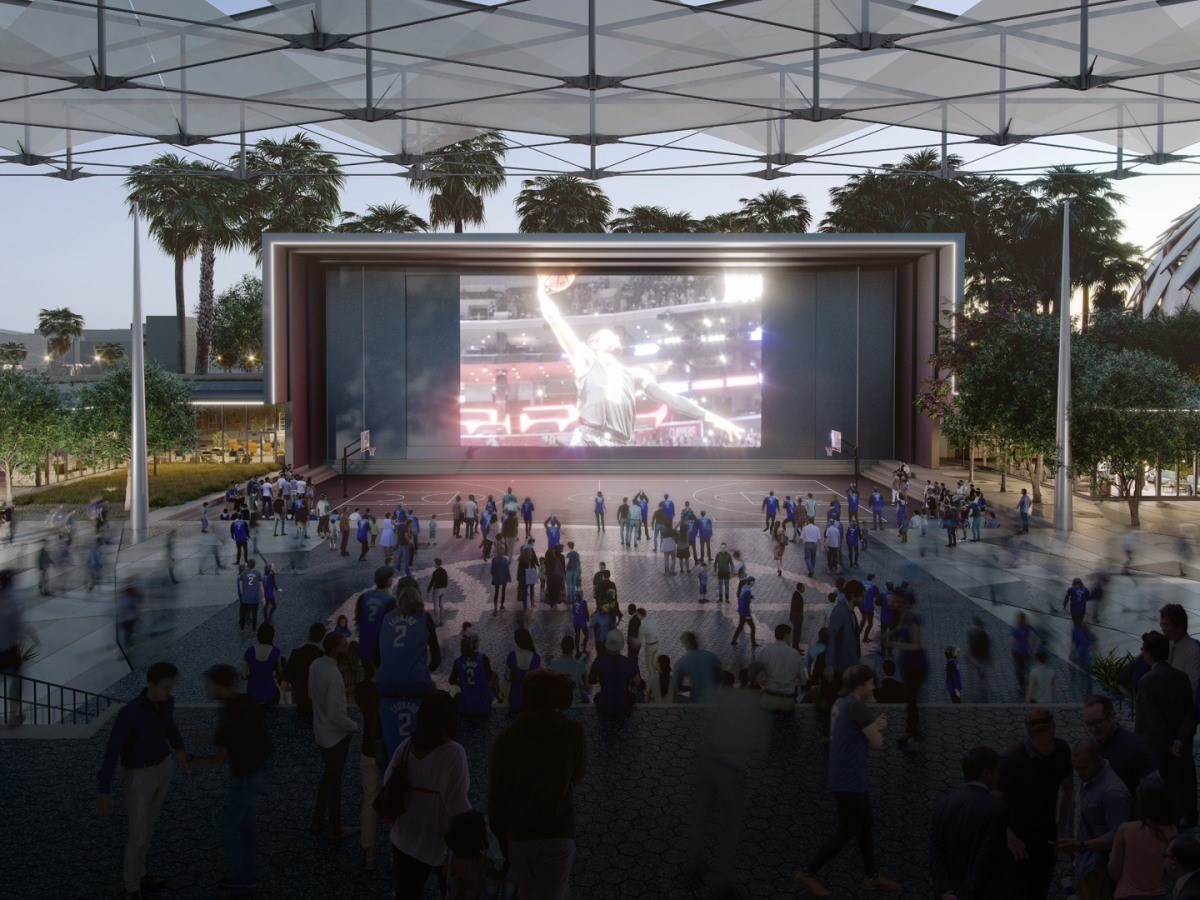
“Kids’ groups in Inglewood will be able to say, ‘I played basketball at the Intuit Dome,’” Ballmer said. “I’m really excited about that.”
The Intuit Dome is still under construction but on schedule to open for the 2024-25 NBA season. It’s already slated to host the NBA All-Star Game in 2026, and will be used for basketball in the 2028 Summer Olympics. The arena hasn’t even opened its doors yet and somehow, backed by Ballmer, it’s already living up to the hype.
“We want this to be the ultimate basketball experience on the planet,” Ballmer said. “I want it to be rockin’ and a-rollin’—the most intense, fun thing you’ve ever done with basketball. Even though L.A. is the land of transplants, this is Clipper Nation, and we built this for you.”
(32)

